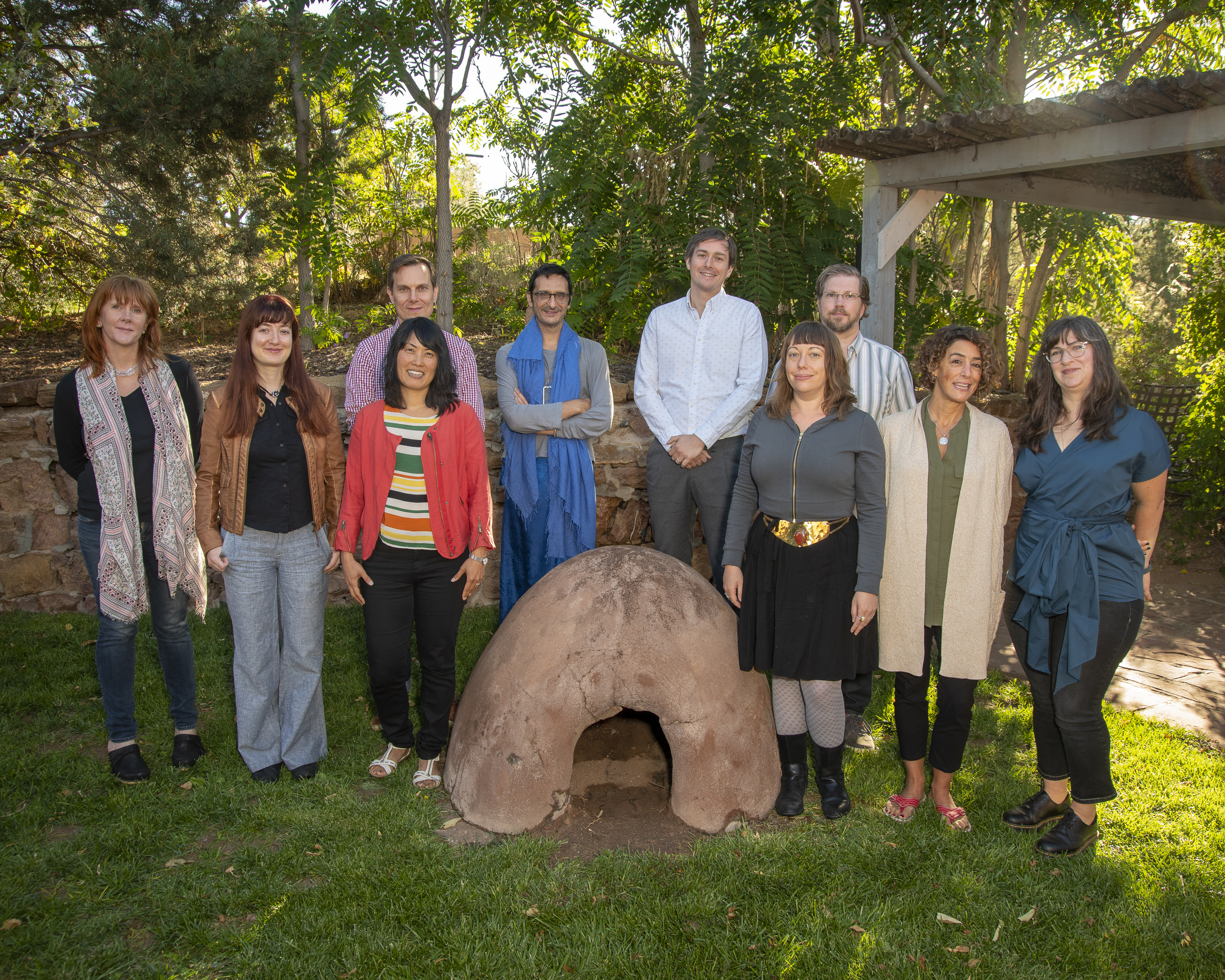
Death Culture in the 21st Century Advanced Seminar Participants
Co-chaired by Shannon Dawdy and Tamara Kneese
September 23–27, 2018
Death Culture in the 21st Century
How is the experience of death and mourning changing under conditions of growing religious plurality and secularization, technological mediation, and globalization? Cultures throughout history have deployed different media and objects to communicate with and remember the dead. At the turn of the 21st century, this assemblage is undergoing profound and rapid change. New (and revived) ways of treating the body and memorializing the dead are proliferating across global cities. What are the beliefs, values, and ontologies entwined with these emergent death practices? Are they indicative of new cosmologies or elaborations of persistent themes? Are we witnessing a shifting relationship between the living and the dead? The purpose of the Death Culture and the 21st Century Advanced Seminar was to explore these questions and more.
Anthropologists have spent ample time discussing the process of dying, especially with regard to biomedicalization, but there has not been sufficient attention paid to emergent mortuary and mourning rituals. Discussions of death practices tend to be siloed by region or type of ritual. Often, digital death practices are completely omitted from discussions of green burial and mortuary rituals, while digital death volumes often focus on the Global North, and the US, Australia, and the UK in particular, while leaving out the richness of materiality that also comes with death care practices, whether digital or physical. In an attempt to bridge these different ways of approaching death, with a special focus on practices themselves, not just on identities or groups, seminarians considered the whole suite of practices together —from disposition of the body to the digital afterimage of a life. By bringing together historians, communications and media scholars, religious studies scholars, and anthropologists studying new techno-cultures of death care, seminar participants sought to contextualize emerging mortuary practices and better understand the diversity of emergent death care rituals.
Topics of discussion included:
- The slippage between religious, spiritual and secular treatments of death, considering transhumanism as a belief system and ethos;
- The intimate connections between life extension practices and modes of capitalism, from how labor is organized and (life) assets are amortized to Silicon Valley’s fixation on innovation, algorithms, and tech solutions for all human problems;
- Changing rituals when it comes to the disposition of the corpse, memorialization, and mourning, including rituals that are explicitly secular in nature and/or place the corpse at the center of new rituals;
- How new digital media platforms like Facebook are informing Evangelical Christian experiences of grief and mourning in the US and Europe;
- The home funeral movement in the US, examining tensions between commercial funeral homes and home-based death care practices; and
- The fact that media technology has the potential to create both distance and intimacy in the mourning process.
Despite the range of subjects and the interdisciplinary affiliations of participants, discussions highlighted many strong points of connection. Embodiment and materiality was a central theme, related not only to the corpse itself, but also to embodied rituals involved with death care. Another was the issue of temporality, including the power and politics of nostalgia as a mobilizing force and the speed of mortuary rituals in various contexts. Participants also examined the ways that new technologies influence emergent death care practices, not only looking at digital media platforms or social media mourning, but also at the role of new techniques of handling bodily remains, including cremation diamonds and transhumanist forms of life extension like cryonics.
Participants recognized that as diverse as the group was, there are large parts of the world that were not represented in the seminar and about which they would like to know more (Latin America and Asia, in particular). It is hoped that an edited volume will be ready for publication by late 2019 and will include scholars studying death cultures in these areas of the world.
Shannon Lee Dawdy, Chair
Professor, Department of Anthropology, University of Chicago
Tamara E. Kneese, Chair
Assistant Professor, Department of Media Studies, and Director, Gender and Sexualities Studies Program, University of San Francisco
Matthew Engelke
Professor, Department of Religion, and Director, Institute for Religion, Culture, and Public Life, Columbia University
Abou Farman
Assistant Professor of Anthropology, The New School for Social Research
Jenny Huberman
Associate Professor, Department of Anthropology, University of Missouri – Kansas City
Tim Hutchings
Assistant Professor, Department of Religious Ethics, Nottingham University – UK
Rebekah Lee
Senior Lecturer in History, Goldsmith College, University of London
Philip Olson
Assistant Professor, Department of Science, Technology and Society, Virginia Tech University
Margaret Schwartz
Associate Professor, Department of Communications and Media Studies, Fordham University
Anya Bernstein
John L. Loeb Associate Professor of the Social Sciences, Department of Anthropology, Harvard University
Generous support provided by the Annenberg Conversations Endowment
Videography by Garret P Vreeland
Advanced Seminar Presentation on Death Culture in the 21st Century
September 26, 2018 @ 12:00 pm – 1:00 pm
Eric S. Dobkin Boardroom, SAR Campus
660 Garcia Street, Santa Fe, NM
Shannon L. Dawdy, Professor, Department of Anthropology, University of Chicago, and Tamara E. Kneese. Lecturer, Department of Gender, Sexuality and Women’s Studies, University of California – Davis
How is the experience of death and mourning changing under conditions of growing religious plurality and secularization, technological mediation, and globalization? Cultures throughout history have deployed different media and objects to communicate with and remember the dead — from heirlooms, inscription, mementos, music, clothing and architecture to photography, telegraphy, television and the internet. This presentation provides an overview of seminarians’ work to address how the dead continue to shape the world around us through these forms — and, most importantly, how and why that assemblage is changing.